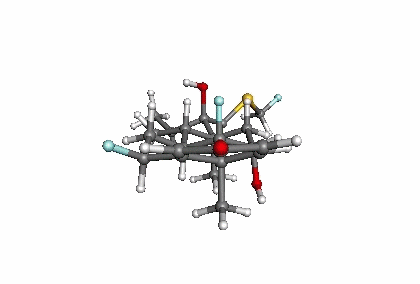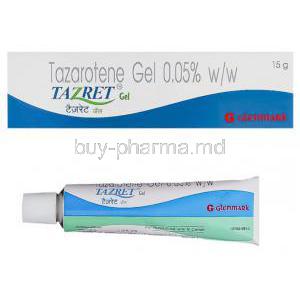Fluticasone
- I. Introduction
- II. Uses of Fluticasone
- III. Off-label Use
- IV. How Fluticasone Works
- V. Composition of Fluticasone
- VI. Dosage and Administration
- VII. Side Effects
- VIII. Interaction with Other Drugs and Substances
- IX. Warning, Contraindication, and Precautions
- X. Special Administration Considerations
- XI. Storage Requirements
- XII. Conclusion
I. Introduction
A. Overview of Fluticasone
Fluticasone, a man-made glucocorticoid plays a role in managing a wide range of inflammatory and autoimmune disorders. It comes in forms, like inhalers, nasal sprays, and creams showing strong anti-inflammatory effects.
B. Importance in Medical Science
The use of Fluticasone in healthcare has brought about notable progress in managing inflammatory disorders. Its ability to specifically target inflammation while minimizing its impact on the rest of the body has made it a choice among medical experts. It offers advantages such as reduced side effects compared to steroids and provides flexible administration routes tailored to individual patient requirements.
C. Therapeutic Class and Forms
Fluticasone, which falls under the category of corticosteroids, works by imitating the actions of hormones naturally found in the body that regulate inflammation. It comes in forms for various purposes; Inhalational, Used to handle respiratory conditions. Nasal; Employed for treating allergic rhinitis and nasal polyps. Topical; Applied to manage skin conditions such as eczema and psoriasis.
D. Historical Development
The development of Fluticasone from its beginnings to its use in settings has been a shining example of scientific dedication and creativity. Its creation during the 20th century marked a significant breakthrough in steroid chemistry, introducing remarkable selectivity and minimizing adverse side effects. The pharmaceutical industry has consistently improved the formulation of Fluticasone, leading to a range of products that offer optimized therapeutic benefits.
II. Uses of Fluticasone
A. Treatment of Allergic Rhinitis
Fluticasone's effectiveness in treating rhinitis is evident through its ability to reduce symptoms like sneezing, stuffy nose, and itching. By targeting the root cause of inflammation, it provides relief to those affected.
References:
- Relief of sinus pain and pressure with fluticasone propionate aqueous nasal spray: a randomized, double-blind, placebo-controlled study1
- Fluticasone nasal preparation. Fluticasone furoate2
- Fluticasone Nasal Spray: MedlinePlus Drug Information3
B. Asthma Management
Fluticasone plays a role in managing asthma, offering a range of benefits such as reducing bronchial inflammation preventing asthma flare-ups, and improving overall lung function. Its inclusion in asthma control plans has significantly contributed to enhancing the quality of life for patients with asthma.
References:
- Fluticasone inhalation Uses, Side Effects & Warnings1
- Fluticasone Oral Inhalation: MedlinePlus Drug Information2
- Fluticasone (Inhalation Route) - Mayo Clinic3
C. Chronic Obstructive Pulmonary Disease (COPD)
When used in the treatment of COPD, Fluticasone works together with bronchodilators to enhance lung function and reduce exacerbations. It plays a role in the overall treatment plan for individuals with moderate to severe COPD, effectively addressing the condition's inflammatory and obstructive aspects.
References:
- Fluticasone (Flovent) for COPD1
- Fluticasone inhalers: medicine to treat asthma and COPD2
- Fluticasone/Salmeterol: Side Effects, Dosage, Uses, and More3
D. Eczema and Dermatological Conditions
Topical preparations of Fluticasone have brought about advancements in treating long-term skin conditions such as eczema. Its potent anti-inflammatory properties, customized delivery methods, and excellent safety record make it a crucial tool in relieving symptoms on the skin.
References:
- Fluticasone topical Uses, Side Effects & Warnings1
- Fluticasone Topical: MedlinePlus Drug Information2
- Fluticasone Propionate Topical: Uses, Side Effects … - WebMD3
E. Other Approved Indications
Besides its uses, Fluticasone is effective in various medical situations, such as pulmonary fibrosis, nasal polyps, and other inflammatory respiratory conditions. The fact that it exhibits therapeutic benefits indicates its pharmacologically solid characteristics.
References:
- Fluticasone Nasal Spray: MedlinePlus Drug Information1
- Fluticasone Propionate Nasal: Uses, Side Effects, Interactions … - WebMD2
- Novel Fluticasone Delivery System Found to Reduce Nasal Polyps … - AJMC3
III. Off-label Use
A. Investigational Uses in Various Conditions
Fluticasone has been investigated for uses beyond its approved indications due to its anti-inflammatory properties. Ongoing clinical studies explore its potential in diseases, rare inflammatory conditions, and specific gastrointestinal disorders. These exploratory applications demonstrate the widening scope of Fluticasone's benefits beyond conventional uses.
References:
- Non-steroidal anti-inflammatory drugs and the gastrointestinal tract1
- Mucins in Intestinal Mucosal Defense and Inflammation2
- Management of Inflammatory Bowel Disease3
B. Clinical Trials and Emerging Therapies
Researchers and medical professionals are actively exploring the boundaries of Fluticasone research. They are conducting clinical trials and investigating new therapeutic options. Together they are working to understand the biological mechanisms of Fluticasone and its potential applications, which will ultimately contribute to improving patient care in the future.
References:
- Fluticasone Furoate/Umeclidinium/Vilanterol (FF/UMEC/VI … - Springer1
- Inhaled Fluticasone for Outpatient Treatment of Covid-19: A … - medRxiv2
- Montelukast and fluticasone compared with salmeterol and fluticasone in …3
C. Ethical Considerations and Regulations
The use of Fluticasone for purposes than those approved by regulatory authorities raises ethical and regulatory concerns. It is essential to follow guidelines, obtain informed consent from patients, and prioritize their well-being. By adhering to these principles, we can responsibly expand the advantages of Fluticasone to new medical scenarios.
References:
- Draft Guidance on Fluticasone Propionate May 2021 - Food and Drug …1
- Draft Guidance on Fluticasone Propionate May 2023 - Food and Drug …2
- Draft Guidance on Fluticasone Propionate - Food and Drug Administration3
IV. How Fluticasone Works
A. Mechanism of Action
Fluticasone functions as a man-made glucocorticoid working by attaching to the receptor to bring about its anti-inflammatory effects. Once activated, the receptor complex moves into the nucleus and adjusts gene expression. As a result, it inhibits cytokines, suppresses immune cell growth and function, and decreases blood vessel permeability. This intricate and sophisticated process allows for the regulation of inflammation in different disease conditions.
B. Pharmacokinetics
How Fluticasone is processed in the body, including how it gets absorbed, distributed, metabolized, and significantly excreted, affects its effectiveness as a treatment. Some critical factors to consider are; Absorption; Depending on how it's taken (through inhalation or nasal administration) Fluticasone can have patterns of absorption. When inhaled or used nasally, it's not significantly absorbed into the bloodstream. Distribution; Fluticasone has an affinity for plasma proteins, which means it stays in the body for a longer time and provides a sustained therapeutic effect. Metabolism; The liver enzyme CYP3A4 is primarily responsible for breaking down Fluticasone. Excretion; Most of the drug is eliminated through fecal matter. Understanding these aspects helps us better understand the pharmacokinetics of Fluticasone and its potential benefits as a treatment option.
C. Impact on Inflammation and Immune Response
Fluticasone significant effect on the immune response arises from its capacity to regulate cellular functions at the molecular level. Through the inhibition of signals related to inflammation and the suppression of immune cell activation, it promotes a balanced resolution of inflammation.
V. Composition of Fluticasone
A. Chemical Structure and Properties
Fluticasone, a compound, has a chemical structure with specific functional groups that enhance its anti-inflammatory effectiveness. It can easily penetrate target cells due to its properties. Moreover, its molecular architecture is carefully designed to ensure stability and specificity.

B. Available Formulations and Strengths
Fluticasone comes in forms to meet various therapeutic requirements. These include inhalers with strengths ranging from 50 to 500 micrograms per dose. There are also nasal sprays in concentrations like 27.5 or 50 micrograms per spray. Additionally, topical creams and ointments with potencies, are tailored for different dermatological conditions.
VI. Dosage and Administration
A. Standard Dosage Guidelines
The dosage schedule for Fluticasone needs to be adjusted based on the specific therapeutic needs of the patient's age, weight, and overall health condition. The recommended doses may differ depending on the purpose of treatment; 1. For managing asthma, It is typically advised to use Fluticasone inhalation in doses ranging from 100 to 500 micrograms daily. 2. For rhinitis, The usual dose is around 50 micrograms per nostril daily. 3. In conditions, applying Fluticasone topically is essential as directed by a healthcare professional. Please consult your healthcare provider for the appropriate dosage regimen for your situation.
B. Administration Techniques
To ensure that Fluticasone is administered correctly for therapeutic results,, specific techniques must be followed. These techniques involve using the inhalation methods employing the correct nasal spray techniques, and ensuring uniform topical application. Each design should be tailored to suit the formulation and individual needs.
C. Special Considerations for Specific Populations
It is essential to care when dealing with specific groups like the elderly, children, pregnant women, and those with liver problems. Sometimes, it is crucial to personalize the dosage, closely monitor the patients and provide them with comprehensive counseling when administering Fluticasone.
D. Dosage Adjustments and Monitoring
Regular monitoring and possible adjustments to the dosage are often necessary during fluticasone therapy. It is essential to pay attention to factors such as the response to the treatment any new side effects that may arise, and any existing medical conditions. This careful approach ensures a practical therapeutic experience.
VII. Side Effects
A. Common Side Effects
Fluticasone, commonly associated with effects, may occasionally result in nasal dryness or irritation, hoarseness or throat irritation, headaches, and coughing.
B. Serious or Rare Side Effects
In some cases, Fluticasone can rarely cause severe side effects such as; Suppression of adrenal function Development of osteoporosis (when used for an extended period) Glaucoma or increased pressure, within the eye Severe skin reactions
C. Management and Mitigation Strategies
Managing the side effects of Fluticasone requires a well-informed approach from both healthcare providers and patients. Some effective strategies include; Following the dosages consistently, Regularly scheduling follow-up appointments and monitoring, Educating patients about the correct techniques for administering the medication Taking prompt action if any severe side effects occur. Implementing this comprehensive strategy helps maintain a balanced risk-to-benefit ratio, ultimately optimizing patient outcomes.
VIII. Interaction with Other Drugs and Substances
A. Potential Drug Interactions
The effectiveness and safety of Fluticasone can be significantly affected by its interactions with medications. These interactions may include an increased risk of side effects when used with corticosteroids and changes in metabolism when taken with CYP3A4 inhibitors which could potentially increase exposure and the need for dose adjustments when interfering with salicylates or antidiabetic agents. It is crucial to review the patient's medication history due to the complex nature of these interactions.
B. Food and Lifestyle Interactions
Certain aspects of one's lifestyle and dietary choices can potentially influence the effectiveness of Fluticasone as a treatment. Here are some factors to consider; 1. Alcohol; It is important to note that consuming alcohol while taking Fluticasone may increase the risk of experiencing problems. 2. Grapefruit; The consumption of grapefruit can impact the metabolism of Fluticasone due to substances present in the fruit that inhibits CYP3A4, an enzyme involved in drug metabolism. 3. Smoking; If you are prescribed Fluticasone for conditions, it is worth mentioning that smoking may worsen these conditions, so it is advisable to abstain from smoking while using this medication.
C. Management and Prevention of Interactions
To effectively manage the interactions of Fluticasone, it is essential to implement an approach that includes the following key elements; 1. Conduct an assessment of the patient's overall condition and health status. 2. Carefully review all medications being taken concurrently and consider any lifestyle factors that may affect Fluticasone's efficacy. 3. Provide education and counseling to the patient,, ensuring they understand how to use Fluticasone and any potential risks or side effects properly. 4. Monitor the patient's progress and schedule follow-up appointments to ensure therapeutic outcomes while minimizing potential complications. By implementing these measures, we can enhance the effectiveness of Fluticasone treatment while reducing any associated risks or complications.
IX. Warning, Contraindication, and Precautions
A. General Warnings and Safety Information
When using Fluticasone, it is essential to follow warnings and safety instructions; Do not use it if you have untreated active infections. Watch for signs of adrenal suppression when using it for a long time. Be cautious if you have glaucoma or cataracts. Avoid suddenly stopping the medication after using it for an extended period.

B. Contraindications
Fluticasone should not be used in patients with a known allergy to the drug or its ingredients. It is also not recommended for individuals experiencing status asthmaticus or acute asthma flare-ups and those with untreated systemic fungal infections. It is essential to understand these contraindications to administer the medication safely.
C. Important Precautions
It is essential to take precautions when using Fluticasone. These precautions include; Keeping an eye on the growth of pediatric patients to ensure it is not being suppressed and regularly assessing bone density loss if Fluticasone is used for an extended period. It is undergoing ophthalmic examinations for those on long-term Fluticasone therapy.
D. Careful Administration Guidelines
It is crucial to follow the instructions for administering Fluticasone therapy. This entails handling the medication adjusting the dosage if there is liver impairment, and being vigilant, for any potential psychological changes.
X. Special Administration Considerations
A. Administration to Elderly
Elderly patients might experience sensitivity to Fluticasone, which may require lower initial doses. It is essential to monitor for any systemic side effects and consider any existing health conditions or medications being taken simultaneously.
B. Administration to Pregnant Women and Nursing Mothers
Fluticasone should only be given to pregnant and breastfeeding women if the advantages outweigh the risks. It is essential to assess the risks to the fetus and minimize the dosage and duration of treatment as much as possible.
C. Administration to Children
Administering medication to children requires attention, including; Ensuring the dosage is appropriate for their age, Monitoring any changes in their growth and development Following specific guidelines for administering medication to pediatric patients.
D. Over Dosage and Emergency Management
An excessive amount of Fluticasone can cause symptoms or worsen long-term side effects. The recommended approach involves evaluating the situation and providing necessary support. It is important to monitor for any systemic effects of corticosteroids and provide ongoing care as needed.
E. Handling Precautions
It is crucial to handle Fluticasone formulations to ensure the effectiveness of the medication and the safety of patients. This includes storing them at recommended temperatures and conditions following hygiene practices, during administration, and correctly disposing of unused products. By adhering to these handling guidelines, we can maintain the therapeutic integrity of Fluticasone.
XI. Storage Requirements
A. Storage Conditions and Temperature
It is important to follow storage requirements to ensure Fluticasone remains effective and stable. These include; 1. Temperature Control; It is recommended to store Fluticasone at room temperature, between 15°C to 30°C (59°F to 86°F). 2. Humidity; Keep the medication in an environment to prevent degradation. 3. Light Protection; Use packaging that blocks exposure, as this helps maintain the integrity of the formulation. By adhering to these storage conditions, we can avoid any adverse changes in the physical and chemical properties of the drug.
B. Shelf Life and Stability
The effectiveness and durability of Fluticasone depend on how it's formulated and stored according to recommended guidelines; Expiry Date; The packaging usually indicates the expiration date. It's essential not to use it after this date as it may affect its effectiveness. Stability After Opening; Some formulations may require refrigeration. Need to be used within a specific timeframe after opening. By following these recommendations, you can ensure Fluticasone maintains its benefits throughout its shelf life.
C. Handling and Disposal
Handling and disposing of Fluticasone properly is crucial to ensure safety and compliance with regulations. When administering the medication, following hygiene standards and aseptic techniques is essential. Any unused or expired Fluticasone should be disposed of according to waste guidelines to prevent potential adverse environmental impacts. These practices highlight the importance of caring for our environment in pharmaceutical care.
XII. Conclusion
A. Summary of Key Points
To summarize Fluticasone is a corticosteroid that plays a crucial role in modern medical treatments. It is used to treat conditions such as allergic rhinitis, asthma, and different skin problems. It's pharmacology and specific administration instructions require a deep understanding and careful management. From its use in approved situations to its increasing application in, off-label cases Fluticasone's significance keeps growing.
B. Future Perspectives and Ongoing Research
Ongoing research in the field of Fluticasone brings forth promising possibilities; its use in new areas of therapy, the creation of innovative formulations to improve patient compliance, and the refinement of administration techniques for better therapeutic results. The future of Fluticasone therapy is filled with opportunities continuously being explored and investigated through inquiry.
























